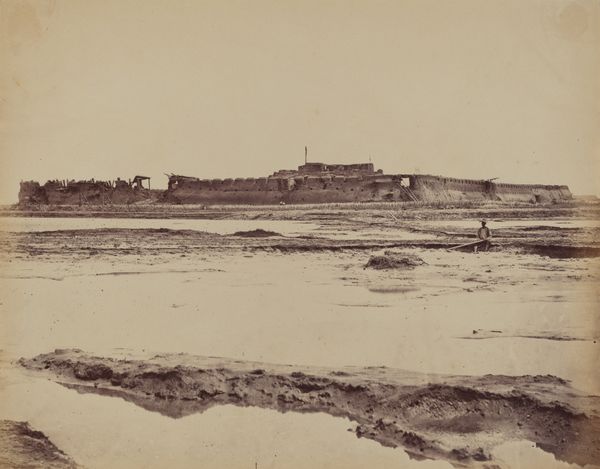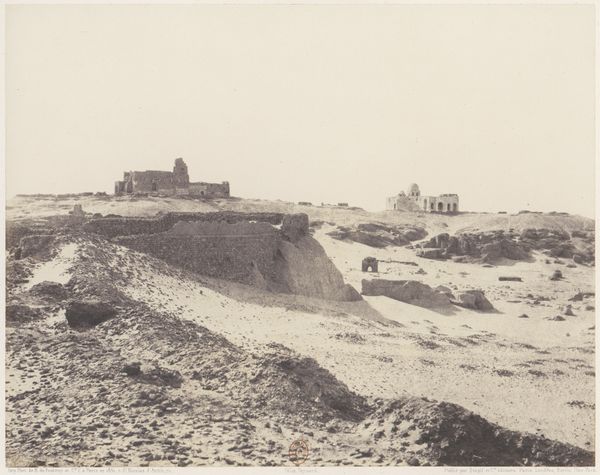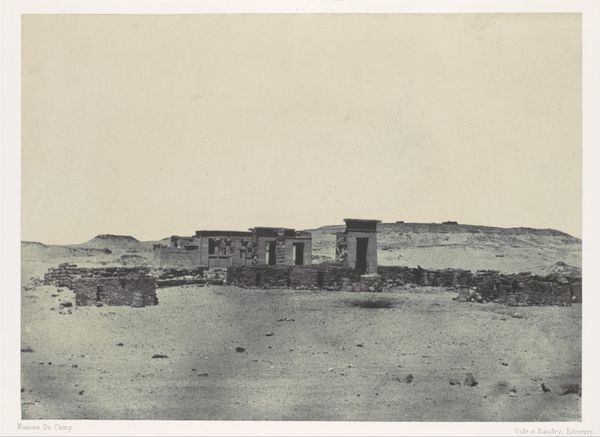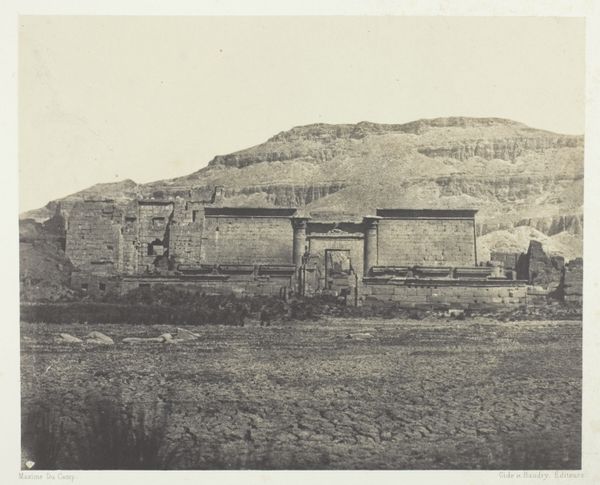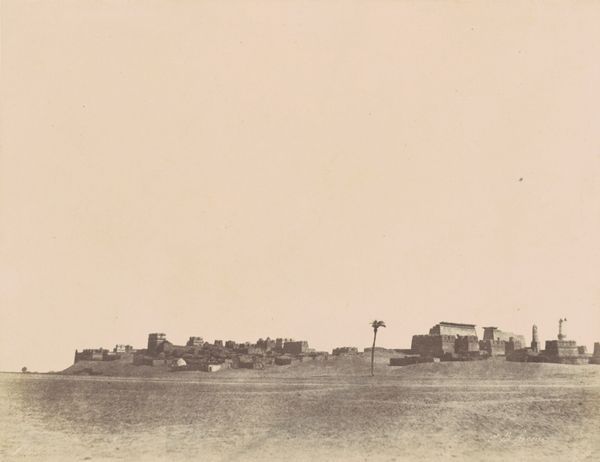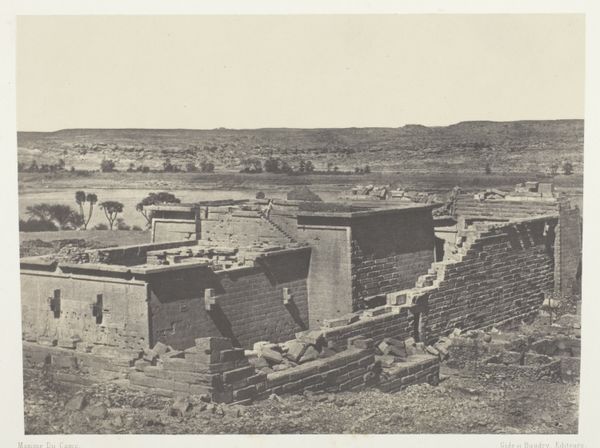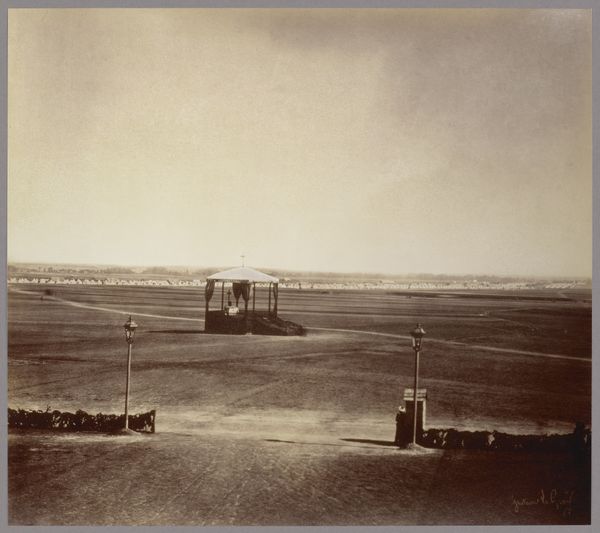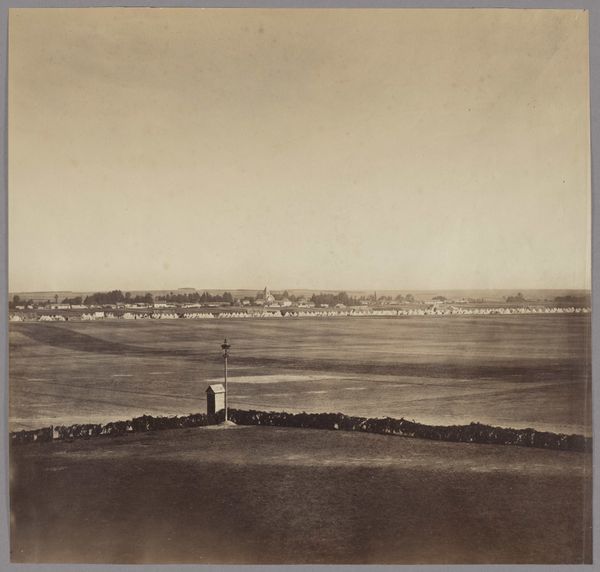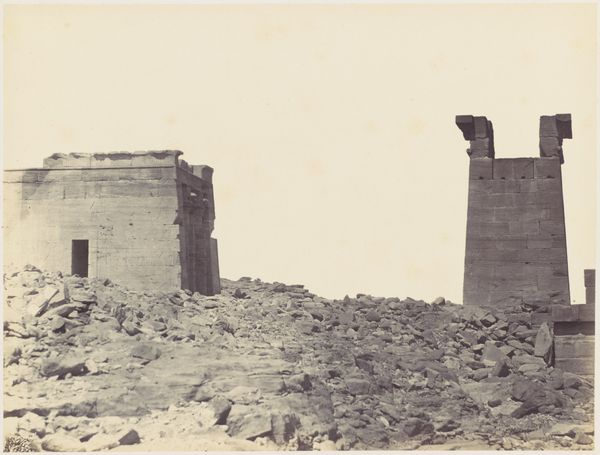
Rear of the North Fort After Its Capture, Showing the Retreat of the Chinese Army, August 21, 1860 1860
0:00
0:00
photography, albumen-print
#
asian-art
#
landscape
#
photography
#
history-painting
#
albumen-print
Dimensions: image: 23 × 29.3 cm (9 1/16 × 11 9/16 in.) mount: 24.6 × 31 cm (9 11/16 × 12 3/16 in.)
Copyright: National Gallery of Art: CC0 1.0
Curator: Looking at this image, I am immediately struck by the sheer devastation. Editor: Yes, it is a powerful image. We’re looking at “Rear of the North Fort After Its Capture, Showing the Retreat of the Chinese Army, August 21, 1860” by Felice Beato, a photograph printed using the albumen process. Curator: Albumen… it’s amazing how such a delicate process captures such brutal reality. All of those bodies scattered in the foreground, the scale of destruction is intense. How would you interpret that, iconographically speaking? Editor: The scattered bodies definitely speak to the fragility of human life. Notice how the fort looms, silent, monolithic? It’s a potent symbol of power and imperial dominance. It overwhelms everything, even in defeat. Flags can also be symbols of occupation, of the imposition of one order onto another, as we see them planted at the North Fort here. Curator: What's fascinating to me is how Beato positions himself – and therefore, the viewer – within the scene. We’re not observing from a safe distance. The foreground of mud and scattered debris forces a physical connection. You almost feel the mud on your boots, or the texture of coarse cloth under your fingers. That tangible sense really hits home. Think about how that albumen process was a significant element to constructing this particular visual, through dark room processes in the field, documenting the labor for empire. Editor: Exactly! It’s that sense of immediacy that photography uniquely captures. And Beato wasn't just documenting; he was crafting a narrative, carefully selecting his vantage point to amplify the impact of the scene. The aftermath speaks volumes. Curator: Indeed. It forces us to confront the messy reality of warfare, stripped bare. Editor: A reminder that history isn’t just about grand strategies; it’s about the lived experiences and physical remains left behind. Curator: Absolutely. Thank you for illuminating those poignant aspects, revealing deeper meanings beyond mere visual records. Editor: A vital historical document, offering a chilling meditation on empire, conflict, and their lasting imprint.
Comments
No comments
Be the first to comment and join the conversation on the ultimate creative platform.
